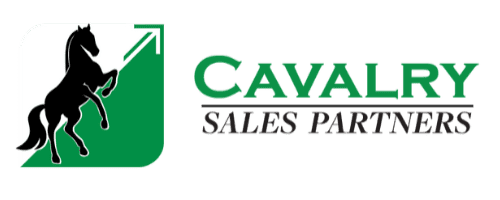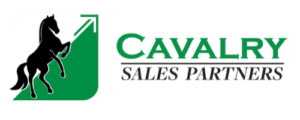The 9 People Who Control Your B2B Deal (And Why You’re Probably Missing Half of Them)
Here’s a painful truth about B2B sales that most small business owners learn too late: You don’t lose deals because your solution isn’t good enough. You lose deals because you don’t understand who’s really involved in the buying decision.
Your sales rep has been building a great relationship with their main contact for months. The conversations are going well, the fit seems perfect, and they’re confident about closing. Then suddenly, someone you’ve never heard of raises an objection, introduces new requirements, or simply says “we’re going to stick with our current vendor.”
What happened? You were selling to one person while eight others were evaluating, influencing, and ultimately deciding.
In complex B2B sales, deals are rarely won or lost based on single relationships. They’re determined by how well you understand, engage, and build consensus across an entire buying committee—a group of stakeholders with different priorities, concerns, and influence levels.
For small B2B sales teams with limited time and resources, mapping and engaging these committees isn’t just helpful—it’s essential for predictable revenue growth.
Why Small B2B Teams Struggle Most with Buying Committees
Large sales organizations often have dedicated resources for account mapping, relationship development, and stakeholder engagement. Small teams are typically stretched thin, focusing on the relationships that feel most accessible and responsive.
This creates several dangerous blind spots:
Single-threaded relationships where your entire deal depends on one contact who may not have the influence you assume they have.
Late-stage surprises when previously unknown stakeholders appear with new objections, requirements, or decision criteria.
Competitive vulnerabilities when other vendors identify and engage stakeholders you’ve missed.
Stalled decisions because you haven’t addressed the concerns of people who can block progress even if they can’t approve it.
Resource inefficiency as your team spends time on contacts who seem engaged but lack real influence over the outcome.
The Nine Critical Roles in Every B2B Buying Committee
Understanding who plays what role in complex purchases gives your team a systematic approach to relationship mapping and engagement strategy. Keep in mind, there are likely several of these for each role.
Role 1: The Decision Maker (Final Authority)
Who they are: The person or small group with ultimate authority and budget control for this type of purchase.
How to identify them: Ask directly: “Who has final approval for investments of this size?” and “What’s the decision-making process for vendor selection?”
Engagement approach: Focus on strategic business impact, risk reduction, and clear ROI. Keep conversations high-level and results-oriented.
Red flags: You’ve completed a full sales cycle without identifying or meeting this person.
Role 2: The Champion (Internal Advocate)
Who they are: Someone inside the organization who actively promotes your solution because they believe it will help them achieve their goals.
How to identify them: They volunteer information, ask for materials they can share internally, and proactively suggest next steps or connections.
Engagement approach: Provide easy-to-share materials, frame benefits in terms of their personal success, and maintain regular supportive communication.
Red flags: Your “champion” is polite but passive, never takes initiative, or can’t explain why your solution matters to them personally.
Role 3: The Coach (Navigation Guide)
Who they are: Someone who helps you understand the organization’s dynamics, processes, and people without necessarily advocating for your solution.
How to identify them: They provide insights about internal politics, explain decision processes, and offer guidance about approach without personal investment in outcomes.
Engagement approach: Ask specific questions about organizational dynamics and decision criteria. Test their knowledge by verifying information with other sources.
Red flags: They give vague or overly cautious answers, suggesting they may not have the insider knowledge they claim.
Role 4: The Influencer (Trusted Voice)
Who they are: People whose opinions carry weight with decision-makers even though they don’t control budgets themselves.
How to identify them: Others defer to their expertise, they’re included in strategic discussions, and their concerns get serious attention from leadership.
Engagement approach: Invite their input early in the process, address their specific concerns directly, and position your solution to solve problems they care about.
Red flags: They’re deeply skeptical of outside vendors or have strong allegiance to existing solutions.
Role 5: The Gatekeeper (Access Controller)
Who they are: Administrative staff, procurement coordinators, or junior managers who control access to senior stakeholders.
How to identify them: They schedule meetings, manage information flow, and often serve as initial screening points for vendor interactions.
Engagement approach: Be respectful, responsive, and professional. Don’t try to “sell” them, but acknowledge their role and make their job easier.
Red flags: Treating them dismissively because they lack budget authority—they can block your access permanently.
Role 6: The User (Daily Operator)
Who they are: People who will use your solution on a regular basis and experience its impact on their daily work.
How to identify them: They ask detailed questions about functionality, implementation, and ongoing support requirements.
Engagement approach: Focus on ease of use, time savings, and reduced frustration. Show how your solution makes their jobs easier rather than more complicated.
Red flags: They feel threatened by change or excluded from the evaluation process.
Role 7: The Blocker (Solution Skeptic)
Who they are: Someone opposed to your solution, often because it threatens their status quo, preferred vendor relationships, or internal territory.
How to identify them: They consistently raise objections, defend current approaches, or redirect conversations toward existing vendors.
Engagement approach: Surface their concerns directly, find common ground where possible, and focus on reducing their influence rather than converting them.
Red flags: They dominate discussions with negativity or have strong personal relationships with competitors.
Role 8: The Sponsor (Executive Supporter)
Who they are: Senior leadership who wants the initiative to succeed because it aligns with organizational strategy, even if they don’t manage details.
How to identify them: They connect your solution to broader business objectives and provide executive-level support for the evaluation process.
Engagement approach: Demonstrate clear alignment with company goals, provide milestone updates, and ensure they remain confident in the initiative’s progress.
Red flags: Executive enthusiasm without ongoing engagement or support when obstacles arise.
Role 9: The Procurement Professional (Process Guardian)
Who they are: Specialists who manage vendor selection processes, contract negotiations, and compliance requirements.
How to identify them: They focus on risk management, standardized evaluation criteria, and formal procurement procedures.
Engagement approach: Prepare documentation in advance, follow their processes precisely, and present pricing simply and transparently.
Red flags: They appear only at the end of the process, potentially delaying decisions for weeks while they complete their evaluation.
Building Your Committee Mapping System
Create simple tools that help your team systematically identify and track buying committee members:
Stakeholder Mapping Worksheet
Use a basic template that tracks:
- Name and title
- Department and role in buying process
- Influence level and decision authority
- Relationship status and engagement history
- Concerns and priorities specific to their role
- Next steps for building or maintaining relationship
Meeting Debrief Process
After every prospect interaction, quickly assess:
- Did we learn about additional stakeholders?
- How did we categorize this contact’s role?
- What concerns might this person raise?
- Who should we meet next?
Champion Development Kit
Create materials that make advocacy easy:
- One-page ROI summary tailored to their organization
- Internal FAQ addressing common concerns
- Email templates they can forward to build support
- Implementation timeline that addresses business impact
Implementation Strategy for Small Teams
Month 1: Foundation and Training
- Train your team on the nine buying committee roles
- Create basic stakeholder mapping templates
- Begin systematic committee identification in current opportunities
Months 2-3: Process Integration
- Integrate committee mapping into regular pipeline reviews
- Develop role-specific engagement strategies
- Create champion development materials and processes
Months 4-6: Optimization and Scaling
- Analyze patterns in successful committee engagement
- Refine approaches based on win-loss data
- Build sustainable processes for ongoing committee management
Common Mistakes That Kill Committee Engagement
Assuming your main contact represents the entire buying committee. Even enthusiastic contacts may lack the influence or information you attribute to them.
Treating all stakeholders the same way. Different roles require different engagement approaches, messaging, and relationship development strategies.
Focusing only on supporters while ignoring potential blockers. Unaddressed concerns from skeptics often surface at the worst possible moments.
Waiting too long to identify procurement requirements. Contract and compliance issues can derail deals that are otherwise ready to close.
Over-relying on a single champion without building broader consensus. Champions can leave, lose influence, or face competing priorities.
Neglecting to update committee maps as situations change. Buying committees evolve throughout sales cycles as priorities shift and new people get involved.
Quick Wins You Can Implement This Week
Audit your current pipeline using the nine-role framework. For each significant opportunity, identify which roles you’ve engaged and which ones you’re missing.
Create a simple stakeholder mapping template that your team can use consistently across all opportunities.
Schedule committee discovery as a standard part of your sales process. Make stakeholder identification a requirement before advancing to proposal stages.
Train your team to ask committee questions in every significant prospect conversation: “Who else will be involved in evaluating this decision?”
Develop role-specific value propositions that address the different concerns and priorities of various committee members.
The Long-Term Competitive Advantage
When your team masters buying committee engagement, several strategic advantages compound over time:
Higher win rates because you address concerns from all stakeholders, not just your primary contacts.
Shorter sales cycles because you build consensus systematically rather than discovering objections late in the process.
Better competitive positioning because you understand the full evaluation criteria and can position against weaknesses others miss.
Stronger relationships because multiple stakeholders see value in your solution and support ongoing partnership.
More predictable forecasting because you understand the complete decision-making landscape for each opportunity.
Reduced late-stage surprises because potential blockers and their concerns are identified and addressed early.
The Bottom Line
In complex B2B sales, you’re not selling to a person—you’re selling to a committee. Your success depends on how well you identify, understand, and engage every stakeholder who influences the final decision.
For small sales teams, this committee mapping isn’t just a nice-to-have—it’s essential for competing effectively against larger competitors who have dedicated resources for relationship development and account management.
The key is making committee identification and engagement systematic rather than accidental. Use the nine-role framework to ensure you’re not missing critical stakeholders, develop role-specific engagement strategies, and create processes that your team can apply consistently across all opportunities.
Start by auditing your current pipeline with this framework. You’ll likely discover that your most stalled deals are missing key stakeholder relationships, while your most promising opportunities have strong committee engagement.
Remember: the goal isn’t to befriend everyone in the buying committee—it’s to understand everyone’s role and address their specific concerns in ways that build consensus for your solution.



